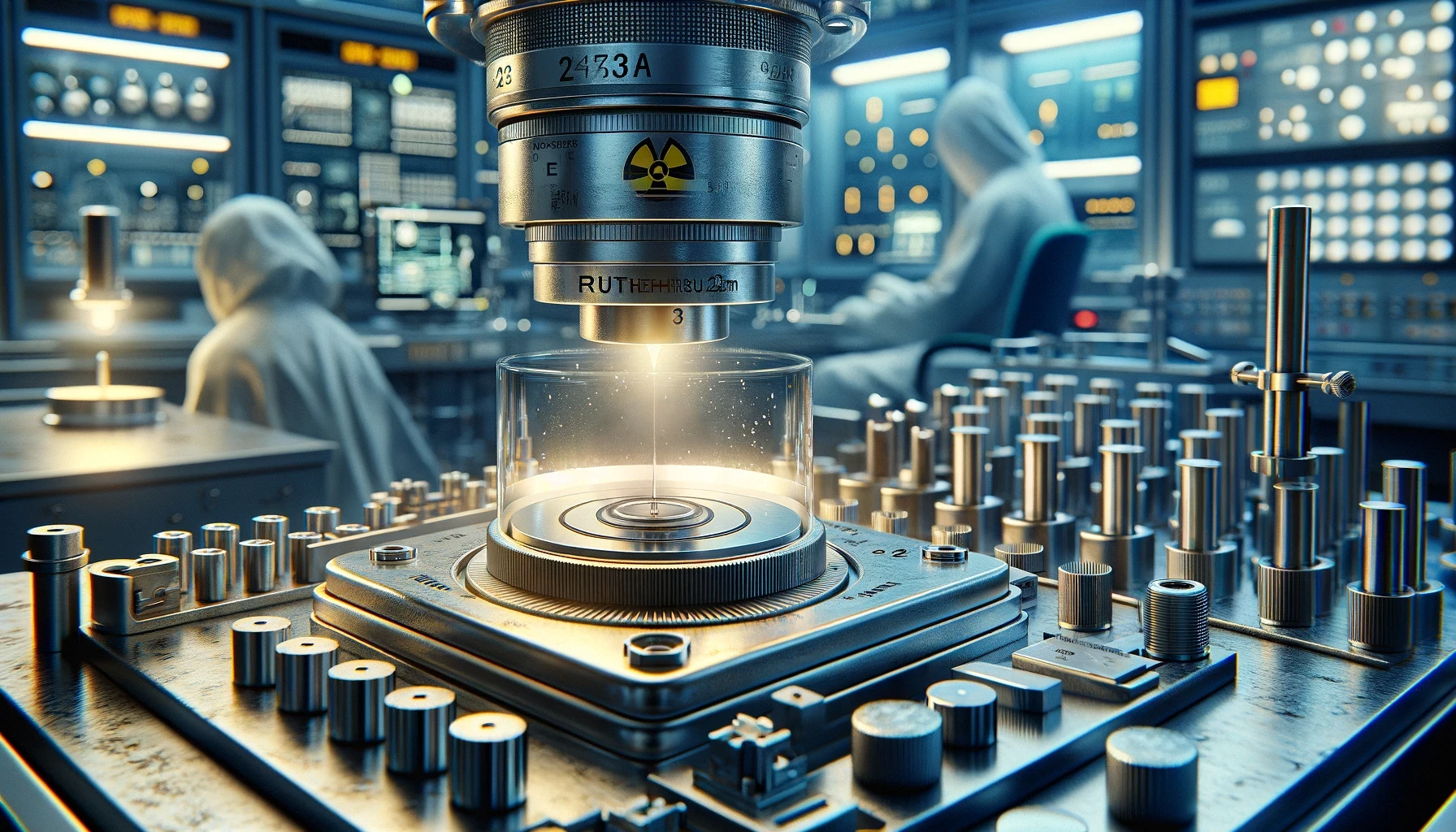Introduction
Rutherfordium (Rf) is a synthetic chemical element with fascinating properties and a unique place in the periodic table. Named after the renowned physicist Ernest Rutherford, Rutherfordium is a transactinide element, marking its position as one of the superheavy atoms in the scientific realm.
Discovery of Rutherfordium

The element Rutherfordium was first reported in 1964 by a team at the Joint Institute for Nuclear Research in Dubna, Soviet Union, and almost concurrently by researchers at the University of California, Berkeley. The discovery involved heavy ion collisions which produced the new element, initially named unnilquadium with the symbol 'Unq' as a placeholder. In 1997, it was officially named 'Rutherfordium' after the pioneer of nuclear physics, Ernest Rutherford, recognizing his contributions to science.
Rutherfordium in the Periodic Table
Rutherfordium is placed in group 4 of the periodic table, among the heavy transition metals. It is a part of the 7th period and belongs to the transactinides. category. Rutherfordium's chemical properties are anticipated to be similar to its lighter homologue hafnium and zirconium due to its placement in the periodic trends.
Physical and Chemical Properties of Pure Rutherfordium

As a synthetic element, Pure Rutherfordium has no stable isotopes, and its most stable known isotope, Rutherfordium-267, has a half-life of about 1.3 hours. The element exhibits a high level of radioactivity, which poses significant challenges in studying its properties extensively. Despite these challenges, the study of Pure Rutherfordium provides valuable insights into the behavior of superheavy elements and their position within the periodic system.
Scientific and Technological Applications
While practical applications of Rutherfordium are limited due to its short half-life and radioactivity, the research surrounding this element is crucial for advancing the understanding of nuclear chemistry and atomic theory. Studies of Rutherfordium and other superheavy elements can lead to discoveries about the limits of the periodic table and the potential for creating more stable heavy nuclei in the laboratory.
Current research focuses on the synthesis of new elements and the investigation of their decay properties, which could inform future technological innovations in nuclear energy and materials science. The synthesis techniques developed for Rutherfordium are also pivotal in the fields of particle physics and radiology, enhancing methods used in medical imaging and cancer treatment.
Production of Rutherfordium

Rutherfordium is not found naturally and is exclusively produced in particle accelerators through complex nuclear reactions. The most common method involves bombarding targets of plutonium with neon ions or targets of curium with carbon ions. These experiments are conducted in highly specialized facilities capable of handling intense radioactivity and the specific needs of synthetic element production.
Associated Elements
During the production of Rutherfordium, several other synthetic elements such as curium and plutonium play critical roles as target materials in the particle accelerator. These elements are typically handled and refined in nuclear reactors and are also of significant interest in nuclear chemistry and physics research.
Modern Uses of Rutherfordium
Currently, Rutherfordium has no practical applications outside scientific research due to its extremely limited availability and short half-life. Its use is primarily confined to the research fields of nuclear physics and chemistry where it helps scientists explore the properties of heavy and superheavy elements. This research aids in the understanding of the limits of the periodic table and the stability of nuclei.
Future Prospects of Rutherfordium
The future of Rutherfordium in scientific research is promising, with potential impacts on various technological advancements. As scientists continue to experiment with Rutherfordium and similar elements, they gain insights that could lead to breakthroughs in material science, nuclear medicine, and energy production. There is particular interest in understanding how these superheavy elements decay, which could unveil new fundamental particles or unknown aspects of nuclear reactions. Furthermore, advances in accelerator technology might one day allow for the creation of more stable isotopes of Rutherfordium, potentially expanding its range of applications.












